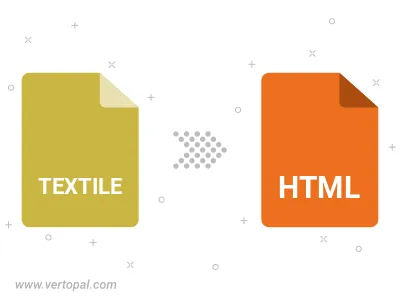Convert TEXTILE to HTML
Convert TEXTILE markup documents to HTML format, edit and optimize documents online and free.

The TEXTILE file extension, an acronym for Textile Markup Language, is a lightweight markup language developed by Dean Allen in 2002. It converts plain text into structured HTML, making it useful for writing articles, forum posts, and documentation. Textile is known for its simplicity and readability, and it has influenced the development of other markup languages like Markdown.
The HTML (Hypertext Markup Language) file extension, is a fundamental file format in web development. It structures content on the web through the use of tags to create elements such as headings, paragraphs, links, and images. Originating from Tim Berners-Lee's work at CERN in the early 1990s, HTML has evolved to become the cornerstone of web design and development, facilitating the creation of dynamic and interactive web pages. HTML files are essential for displaying and structuring web content, ensuring a seamless user experience across various browsers and devices.
Drag and drop your TEXTILE file or click Choose File to proceed.
Finalize the TEXTILE to HTML conversion by applying tools and clicking Convert.
Give the converter a few seconds, then download your HTML file.

Convert TEXTILE to HTML4, or HTML5.
The Vertopal CLI tool provides efficient conversion from TEXTILE markup document into HTML document.
cd to the TEXTILE folder or include the path.